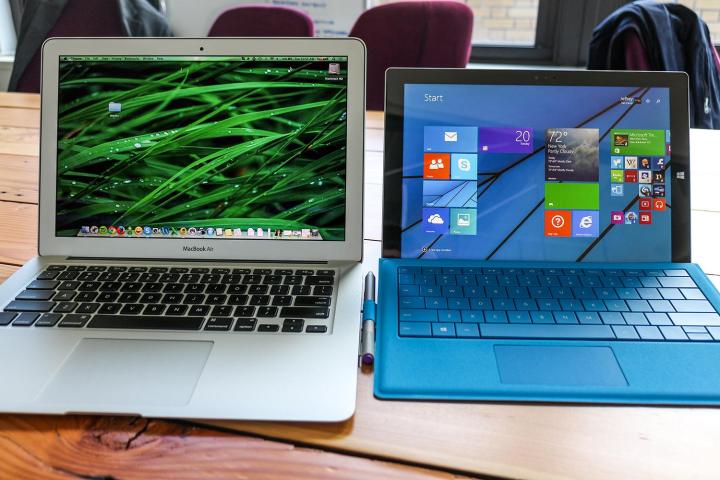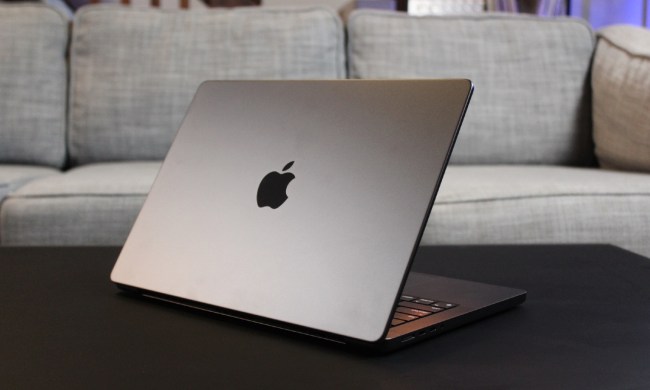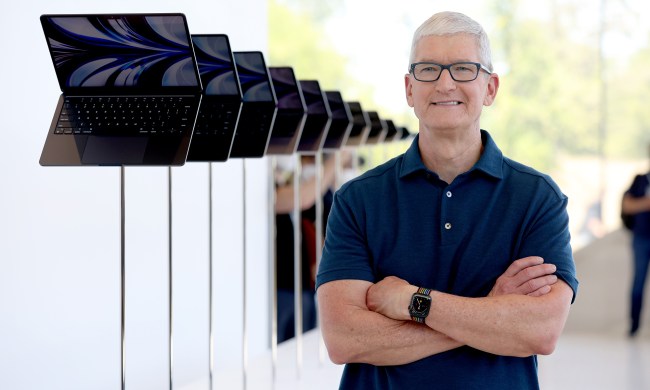
By now, the 13-inch MacBook Air is a known quantity. While it doesn’t have a best-in-class display and a chunky amount of storage, it sets out to be the best all-around computer. In that regards, it performs admirably. However, when Microsoft announced its Surface Pro 3 on Tuesday, it clearly took aim at Apple’s entry-level 13-inch Air. Let’s take a look at how both of these products stack up in this detailed spec comparison.
|
Surface Pro 3  |
MacBook Air  |
|
| Size | 7.93″ x 11.5″ x 0.36″ | 12.8″ x 8.94″ x 0.68″ |
| Weight | 1.76 pounds | 2.96 pounds |
| Screen | 12 inches | 13.3 inches |
| Resolution | 2,160 x 1,440 | 1,440 x 900 |
| Keyboard | Type Cover (optional – $130) | Full-size backlit keyboard with multi-Touch trackpad |
| Operating System | Windows 8.1 Pro | OS X Mavericks |
| Storage | 128GB SSD | 128GB SSD |
| Ports | 1x USB 3.0, Micro SD card reader, headset jack, Mini DisplayPort, Cover port, charging port | Thunderbolt, 2x USB 3.0, SDXC card reader |
| Processor | 1.6GHz dual-core Intel Core i5 | 1.4GHz dual-core Intel Core i5 |
| RAM | 4GB of 1600MHz LPDDR3 | 4GB of 1600MHz LPDDR3 |
| Graphics | Intel HD Graphics 4400 | Intel HD Graphics 5000 |
| Cameras | 5MP 1080p front- and rear-facing | 720p FaceTime HD webcam |
| Connectivity | Wi-Fi 802.11a/b/g/n/ac, Bluetooth 4.0 | Wi-Fi 802.11a/b/g/n/ac, Bluetooth 4.0 |
| Battery | Up to 9 hours | Up to 12 hours |
| Charger | Proprietary Microsoft charger | Proprietary MagSafe 2 charger |
| Marketplace | Windows Marketplace | Mac App Store |
| Price | $999+ | $999+ |
| Availability | Pre-orders begin May 21 | Currently available |
Microsoft designed the Surface Pro 3 with weight and thinness in mind, and it shows. The Surface Pro 3 manages to pack about as much power as the 13-inch MacBook Air, but in a thinner and lighter package. The screen resolution on the Surface Pro obliterates the resolution that’s offered on the MacBook Air’s display. In addition, thanks to the 3:2 aspect ratio found on the Surface Pro 3, it displays slightly more content than the MacBook Air’s display does. However, the high resolution and smaller footprint might have made a significant impact on battery life.
The GPU in the Surface Pro 3 is a modest step down from the MacBook Air’s, though it’s hard to imagine anyone doing any serious gaming on either of these computers. While both of these products hit the same price point at these configurations, there are two things you should keep in mind. First, there is a $799 Surface Pro 3 variant that includes 64GB of storage, a Core i3 processor, and 4GB of RAM. For the purposes of this comparison, we used the $999 model. Second, the Surface Pro 3 does not include a keyboard, which Microsoft sells as an optional accessory that costs $130. If you were to grab one, this model’s price shoots up north of $1,100.
What do you think? Which one would you go for? Let us know in the comments below.


